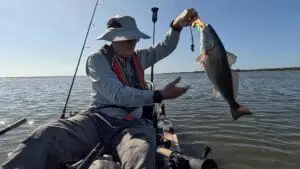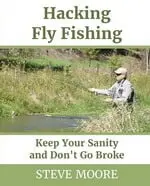How to Get a Fly Out of a Tree While Fly Fishing
Fly fishing is a dance of precision and patience, but even the most seasoned anglers occasionally find their fly tangled in a tree. Whether it’s a low-hanging branch or a misjudged cast, retrieving your fly without damaging your gear—or the tree—requires a mix of finesse and strategy. Here’s a breakdown of the best ways to get your fly out of a tree, ranked from gentle techniques to last-resort options.
🪶 Gentle Techniques: Preserve Your Rig
1. Slack and Shake
Start with the least invasive method. Let out some line to reduce tension, then gently shake the rod tip. This often works if the fly is lightly snagged or caught on a leaf or twig. The goal is to coax the fly free without tugging or jerking.
2. Roll Cast Flick
Use a short roll cast motion to flick the line backward. This technique can pop the fly loose with minimal force and is especially effective when the fly is caught on a thin branch or in light foliage.
3. Bow-and-Arrow Pull
Grab the line near the rod tip, pull it back like a slingshot, and release. This creates a controlled jolt that can snap the fly out of the tree. It’s a favorite among anglers in tight quarters where a full cast isn’t possible.
🌿 Strategic Retrieval: Minimize Damage
4. Use a Long Branch or Wading Staff
If the fly is within reach, use a long stick, net handle, or wading staff to gently poke or lift the branch. This method avoids stressing your rod and keeps your line intact. Just be careful not to damage the tree or disturb nesting wildlife.
5. Climb or Reach Safely
Only consider climbing if the tree is stable and the branch is low. Wet boots and bark can be a dangerous combination, so prioritize safety. If you’re fishing with a buddy, they can help stabilize you or spot hazards.
🧵 Last Resorts: Risk of Breakage or Loss
6. Direct Pull
Point the rod straight at the fly and pull steadily. This reduces stress on the rod and may bend the hook free. It’s a calculated risk—sometimes the fly comes loose, sometimes the tippet snaps.
7. Break Off Cleanly
If all else fails, pull until the tippet breaks. It’s frustrating to lose a fly, but better that than damaging your rod or falling into the water. Consider it a small price for a lesson learned.
🛠 Pro Tips to Avoid Tree Snags
- Barbless Hooks: These are easier to dislodge from branches and safer for catch-and-release fishing.
- Shorter Leaders in Tight Cover: Reduces the chance of snagging when casting under trees or near brush.
- Practice Sidearm Casting: Keeps your loop low and away from overhead hazards, especially useful in wooded areas.
- Know Your Surroundings: Before casting, take a moment to scan for overhanging branches or hidden snags. A little awareness goes a long way.
Final Thoughts
Getting a fly out of a tree is part of the fly fishing experience. It tests your patience, creativity, and problem-solving skills. The key is to stay calm, assess the situation, and choose the least destructive method first. With practice, you’ll develop an instinct for which technique suits each scenario—and you’ll spend more time fishing and less time untangling.
Basic content generated by AI, edited by Steve




